“Mind Map is a unique thinking tool that will bring out your natural genius and enable you to shine in every area of your life.” – Tony Buzan.
Featured image credits: Photo by Diva Plavalaguna
In the last blog, we discussed the basics of Mind Maps, the evolution of the human brain and why the human brain finds it easier to deal with Mind Map. Kindly read my earlier blog first for a better understanding of this blog.
In this second part, I will discuss:
- Brain thinking patterns
- 10 Rules for creating a Mind Map
- Relating Mind Map with Brain function
You might also be interested to read these related articles:
Brain Thinking Patterns
Scientists conducted a lot of experiments on the human brain while performing different tasks. These experiments revealed that the cerebrum divides the tasks into two main categories: left-brained tasks and right-brained tasks. (You need to read my earlier blog to understand more about Cerebrum, its neurons and its importance to Mind Maps)
Left Brain tasks: Words, logic, numbers, sequences, lists and analysis/Academic and intellectual.
Right Brain tasks: Rhythm, spatial awareness, imagination, daydreaming, colour, dimension etc. / ‘artistic’, ‘creative’, and ‘intuitive’.
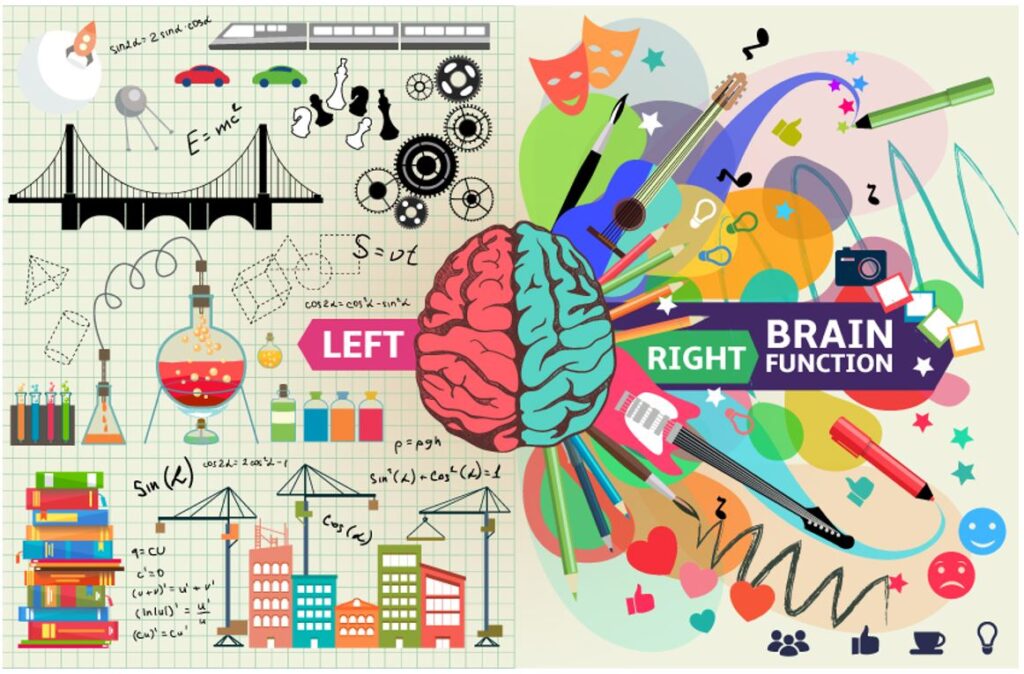
Image source: Internet
The modern educational systems favour ‘left brain’ skills – Mathematics, languages, and the sciences – More than the arts, music, and the teaching of thinking skills, especially creative-thinking skills.
“This is quite unfortunate,” says Tony Buzan, because:
- We are not using the other part of the brain gifted to us by evolution
- The network of 300 million nerves connecting the two hemispheres is idling!
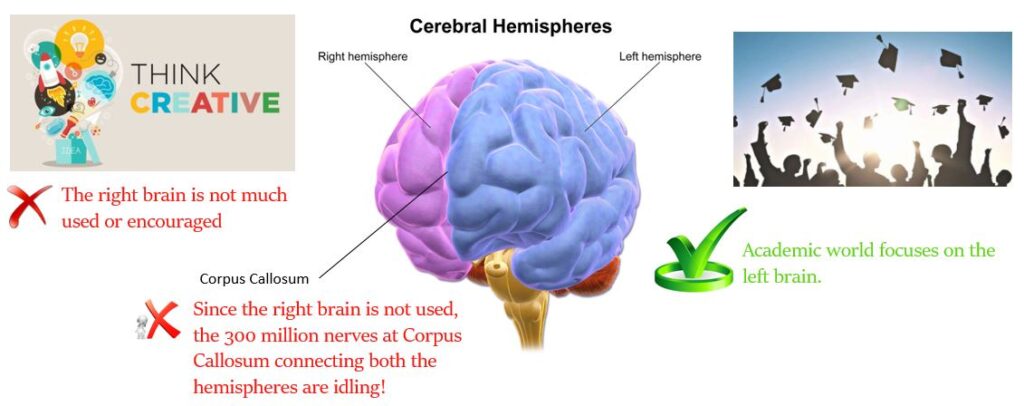
By relying too heavily on tasks that challenge only one side of our Brain (Mostly it was left!), we discourage the dialogue between the two hemispheres and drastically reduce the overall performance of your brain. In short, our brain’s synergetic way of thinking is restricted.
Mind Map is designed to enable the usage of both parts of the brain. How? We will get the answer as we discuss the rules for creating a Mind Map.
10 Rules for creating a Mind Map
These are 10 brain friendly rules for creating a Mind Map. Remember that there is no one correct way to do Mind Maps. Two different persons with the same knowledge on the subject and Mind Map could come out with two entirely different Mind Maps.
A word on software: There are a host of software (Both paid and freeware) available to create Mind Maps. I used the tool iMindMap Version 11 (Presently called ‘Ayoa’) for creating Mind Maps. The sample mind map shown in this blog are images taken from this software. The software gives great flexibility to make quick changes (i.e. Colors and layout) and additions.
Rule 1 – Brainstorm Ideas
- Gather ideas by brainstorming to get the logical sequence.
- Create the initial version on paper/board and then move to a software
I would show a sample of Mind Map creation to better understand the rules. The sample is the case of my learnings from Naval Ravikant. In this case, the needed ideas for creating the Mind Map come from my reading of a book.
Rule 2 – The Central Idea
- Start from the centre of the paper with a CENTRAL IDEA.
- The “Central Idea” indicate what the Mind Map is about
- It is the main theme for the Mind Map
Why this is important?
- It gives the brain the freedom to spread out in all directions and to express itself more freely and naturally.
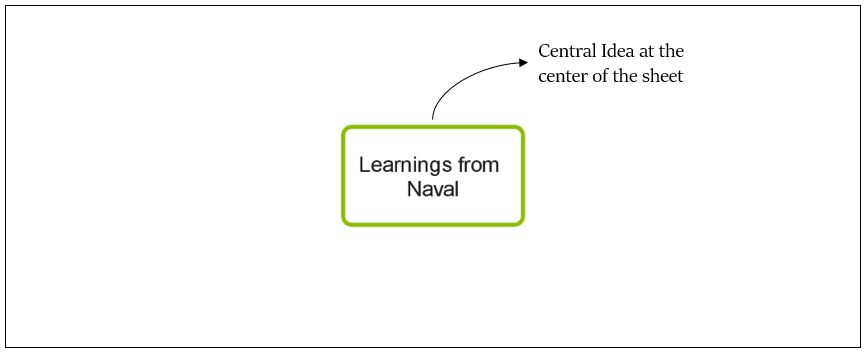
Rule 3 - Image for Central Idea
- Use a suitable image/picture in the central theme
Why this is important?
- Two reasons: (1) Image is worth 1000 words (2) Increases imagination with thoughts and ideas coming from the right brain as well.
- The central image keeps you focused on the theme and also uses the right brain.
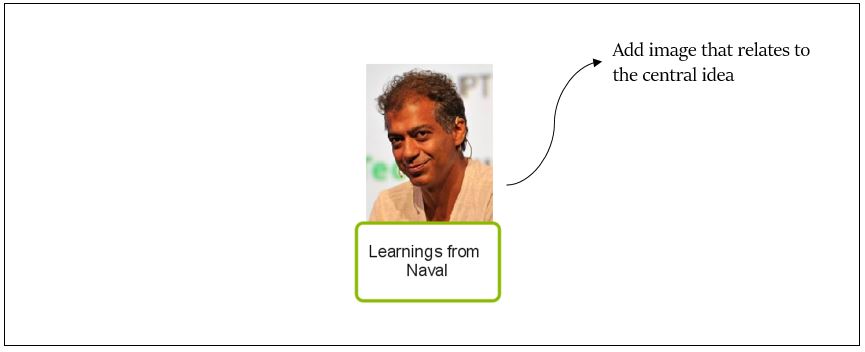
Rule 4 - Connections
- Connect the MAIN BRANCHES to the central image and also connect all other levels with branches.
Why this is important?
- Brain works by association – It likes to link two (or three, or four) things together.
- By connecting the branches, we can understand and remember a lot more easily.
- Connecting your main branches also creates a basic structure for your thoughts.
- The final Mind Map with branches will have a structure similar to Neurons, like the one shown below (Thus Mind Maps are brain’s natural language or means of communication)
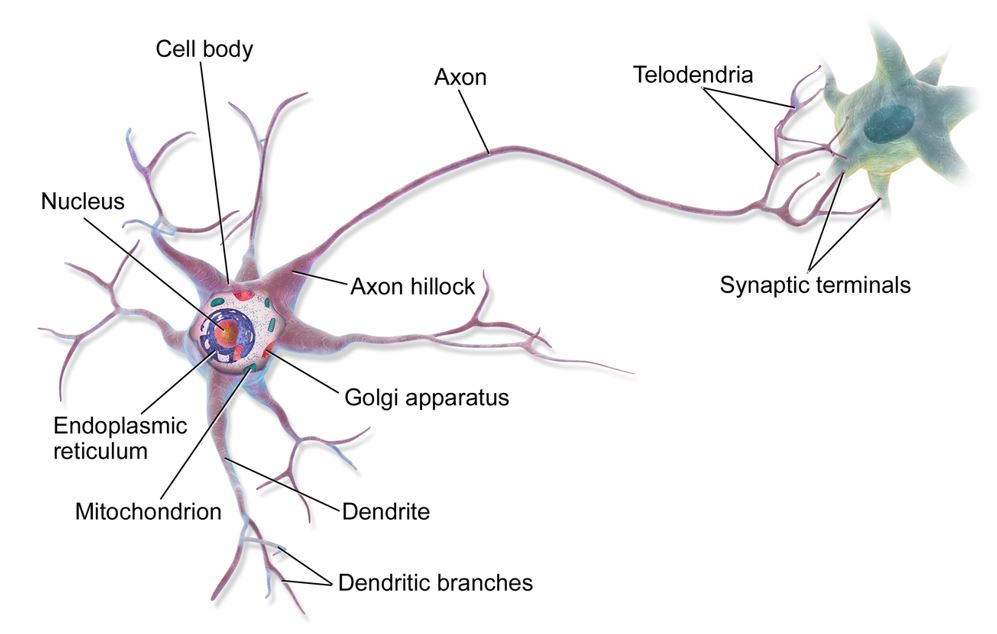
Rule 5 - Curved Branches
- Make your branches CURVED rather than straight-lined.
Why this is important?
- Brain cells are connected through curved nerves and not straight nerves
- Straight lines are boring to your brain.
- Curved, organic branches, like the branches of trees, are far more attractive and riveting to the eye/brain.
Rule 6 - Use Colours
- Use COLOURS in branches and various elements.
- The colours should be in context i.e. Red in the sense of warning some danger or caution.
- Ensure that the colours reflect the reality of the item or object in the discussion, say blue colour, if the discussion is about ocean or sky.
Why this is important?
- Colours are exciting to our brain
- Recognition of colours is the right brain function
- They add tremendous energy to creative thinking.
- One Caution: The colour of the branches should be the same as the main branch.
Note: When you are using paper for the first version, you can use different coloured pens and pencils. Below is the kitty of my colour pens used when creating the Mind Map on paper.
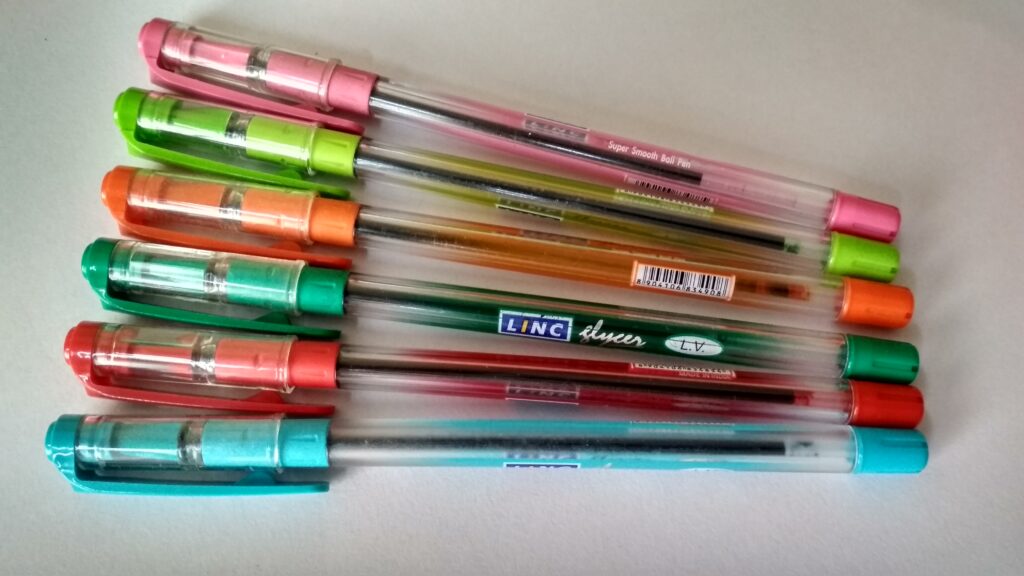
With their combination of colour, connections, and curving branches, Mind Maps become more visually stimulating than conventional notetaking methods. This makes it extremely useful to recall information from Mind maps. The conventional methods are linear and monochrome.
Rule 7 – One Key Word
- Use only one KEY WORD per branch.
Why this is important?
- Single keywords give your Mind Map more power and flexibility.
- A single word or image is like a multiplier, generating an array of associations and connections.
- When you use single keywords, each one is free to better able to spark new ideas and thoughts.
- But… Be flexible, at times there could be exceptions
Below Mind Map covers rules 4 to 7.

Rule 8 - Unleash Creativity
- Unleash the creativity of your right brain
- Wherever possible use symbols, numbers and images
Why this is important?
- Use the right brain’s natural appetite for visual recognition

Rule 9 - Relationship
- Look for a relationship – make connections between ideas generated in the Mind Map.
- Use dotted lines for this purpose.
Why this is important?
- Brain works by association
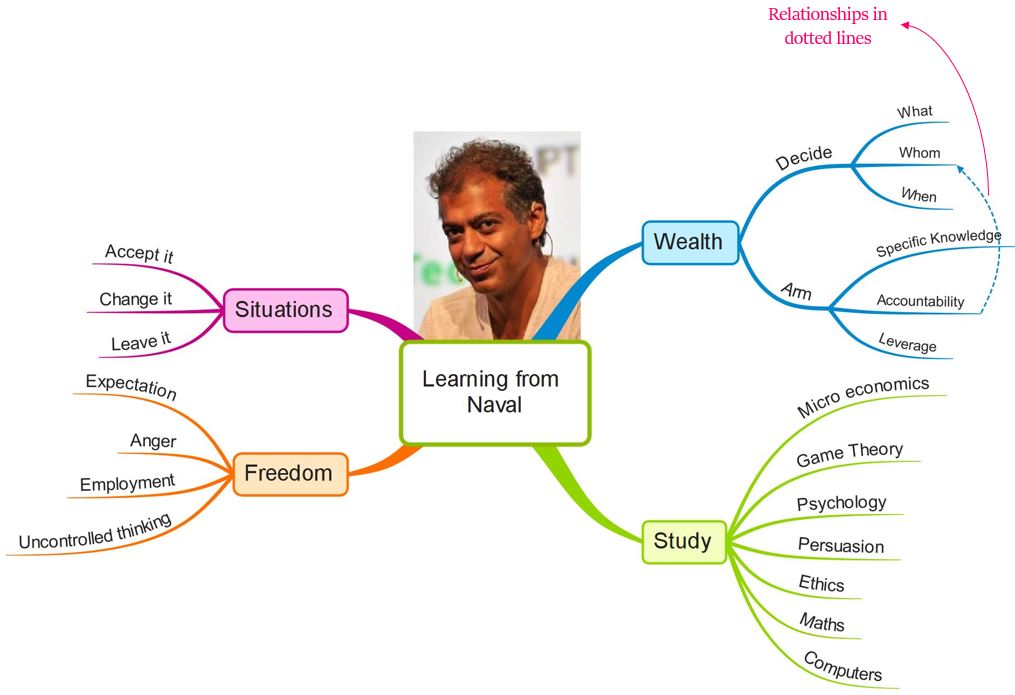
Rule 10 – Revisit your Mind Map
- Revisit the Mind map after a day or two to refine the content.
Why this is important?
- This gives adequate time for the brain to make connections with earlier known or available information.
- It would be preferable that it is done the next day morning on waking up.
- This is because the brain would have made the necessary associations and connections at night.
- Thus you may get new thoughts up when you look at the mid-map in the morning.
These 10 steps help you create visually stimulating Mind Maps.
Relating Mind Map and Brain Function
- You would have seen that the rules bring in more right brain participation
- Thus Mind maps engage both sides of your brain to help unlock your full brain potential
- This happens because it uses a combination of images, colours, and imagination (right brain function) in combination with words, numbers, and logic (left brain function).
In short Mind Map is a thinking tool to unlock your brain power: they reflect the internal Mind Maps of your brain.
Start Now...
You saw how simple it was to create a Mind Map. Start small and with practice, you become experts in it. Most importantly you start using both hemispheres of your brain.
So why wait?
Whatever the phase of your life, start using this tool.
Schools & Colleges
- Teachers and Students must use Mind Maps to teach and learn.
- This would be very effective for quick recall and revision before exams.
- Students starting to use this much early in their lives like Grade 7 or above. You will not only see visible benefits in your academic life but also in your professional life.
In Professional life
- Professional life is filled with challenges and problems that need creative resolution.
- There are multiple views and ideas that compete for our attention.
- Mind Maps help in brain storming, ideas generation and explaining our views to others.
Hope you found this blog useful. Do share my blogs with your friends, peers and fellow investors.


Excellent work by Venkatesh. I have started using mind map in my daily life after seeing great work by Venkatesh.